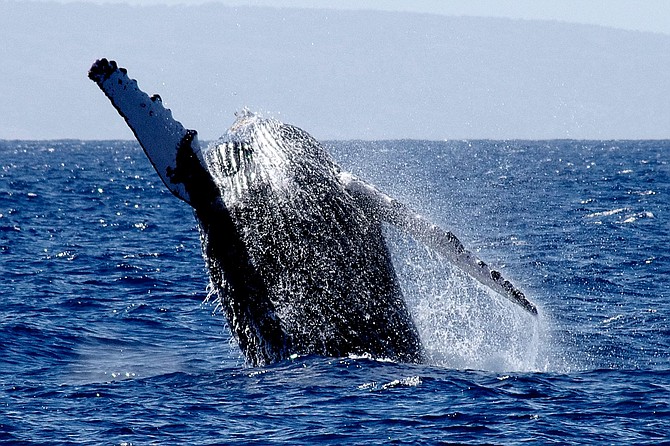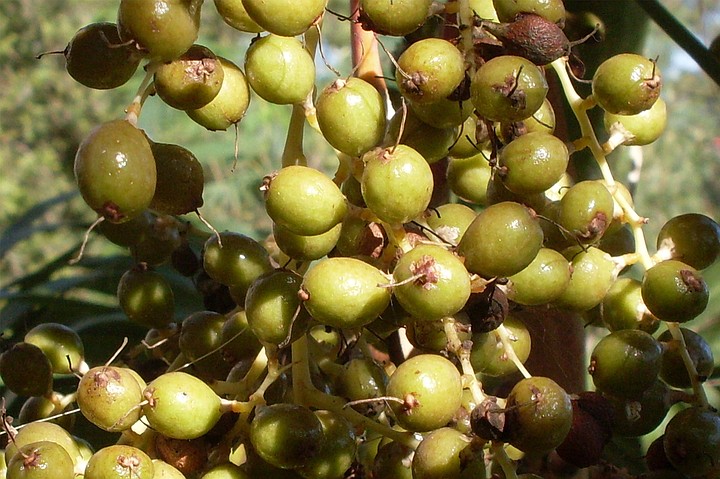 Facebook
Facebook
 X
X
 Instagram
Instagram
 TikTok
TikTok
 Youtube
Youtube

Gray Whale Migration Off San Diego County’s Coast peaks from now until February. The best view spots from land are high points close to the surf. Aside from the whale watching overlook at Cabrillo National Monument, try Sunset Cliffs, the pocket parks and dead-end streets from Pacific Beach to Scripps Park in La Jolla, various ocean overlooks on the trail system at Torrey Pines State Reserve, the cliffs opposite Carmel Valley Road south of Del Mar, overlooks opposite Lomas Santa Fe Drive in Solana Beach, and various cliff-top view points and beach access stairways in Encinitas and Leucadia. Scan the ocean a few hundred yards to a couple of miles out using high-power binoculars. Best times for viewing are about 9 am to noon.

Ripening Palm Fruit, hanging in great clusters on California’s native fan palms (Washingtonia filifera), can be seen (and tasted) this month. The black, pea-sized fruit consists of a deliciously sweet but almost paper-thin skin surrounding a hard seed. (These are not “California dates” — the fruit of cultivated palms introduced into California’s deserts from northern Africa.) Our native fan palms can be seen in their natural habitat in about two dozen canyons within Anza-Borrego Desert State Park. They have also been planted widely elsewhere in California, including along the main streets of Palm Springs.


Gray Whale Migration Off San Diego County’s Coast peaks from now until February. The best view spots from land are high points close to the surf. Aside from the whale watching overlook at Cabrillo National Monument, try Sunset Cliffs, the pocket parks and dead-end streets from Pacific Beach to Scripps Park in La Jolla, various ocean overlooks on the trail system at Torrey Pines State Reserve, the cliffs opposite Carmel Valley Road south of Del Mar, overlooks opposite Lomas Santa Fe Drive in Solana Beach, and various cliff-top view points and beach access stairways in Encinitas and Leucadia. Scan the ocean a few hundred yards to a couple of miles out using high-power binoculars. Best times for viewing are about 9 am to noon.

Ripening Palm Fruit, hanging in great clusters on California’s native fan palms (Washingtonia filifera), can be seen (and tasted) this month. The black, pea-sized fruit consists of a deliciously sweet but almost paper-thin skin surrounding a hard seed. (These are not “California dates” — the fruit of cultivated palms introduced into California’s deserts from northern Africa.) Our native fan palms can be seen in their natural habitat in about two dozen canyons within Anza-Borrego Desert State Park. They have also been planted widely elsewhere in California, including along the main streets of Palm Springs.
Comments